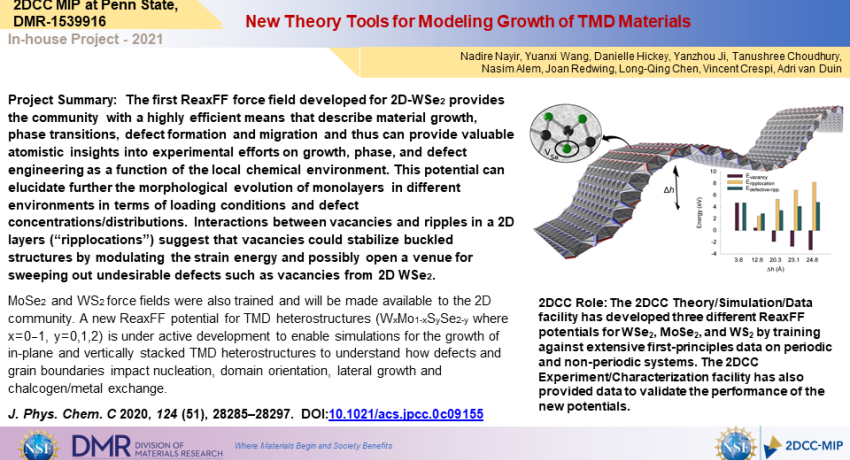Project Summary: The first ReaxFF force field developed for 2D-WSe2 provides the community with a highly efficient means that describe material growth, phase transitions, defect formation and migration and thus can provide valuable atomistic insights into experimental efforts on growth, phase, and defect engineering as a function of the local chemical environment. This potential can elucidate further the morphological evolution of monolayers in different environments in terms of loading conditions and defect concentrations/distributions. Interactions between vacancies and ripples in a 2D layers (“ripplocations”) suggest that vacancies could stabilize buckled structures by modulating the strain energy and possibly open a venue for sweeping out undesirable defects such as vacancies from 2D WSe2.
MoSe2 and WS2 force fields were also trained and will be made available to the 2D community. A new ReaxFF potential for TMD heterostructures (WxMo1-xSySe2-y where x=0–1, y=0,1,2) is under active development to enable simulations for the growth of in-plane and vertically stacked TMD heterostructures to understand how defects and grain boundaries impact nucleation, domain orientation, lateral growth and chalcogen/metal exchange.
J. Phys. Chem. C 2020, 124 (51), 28285–28297. DOI:10.1021/acs.jpcc.0c09155
